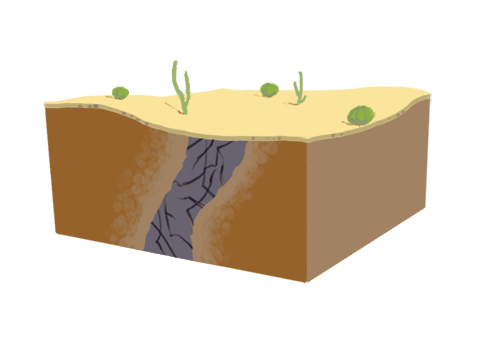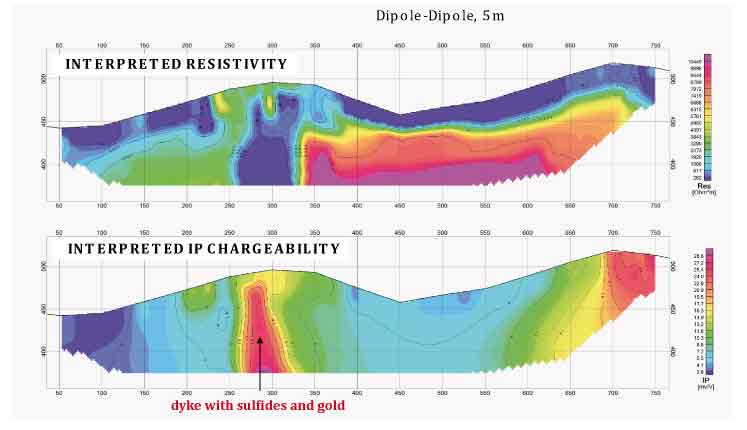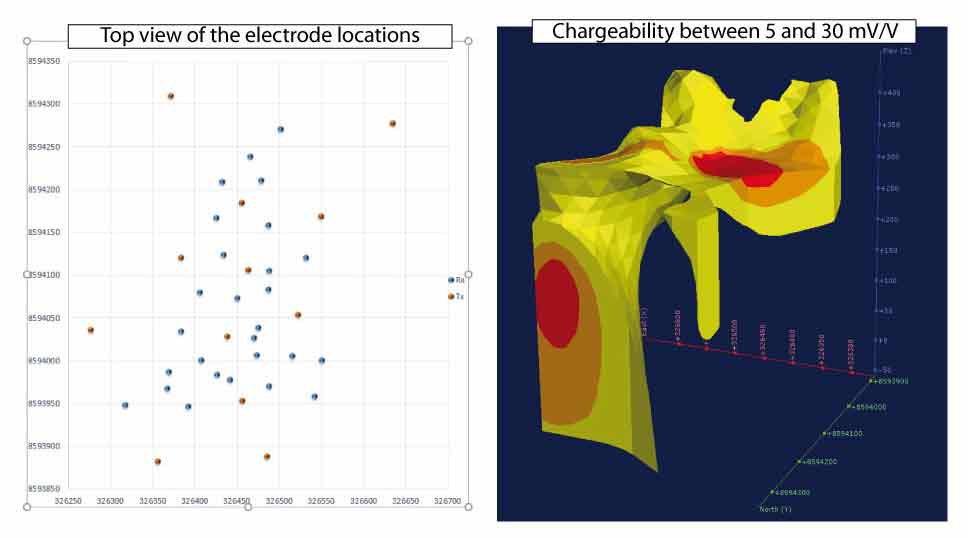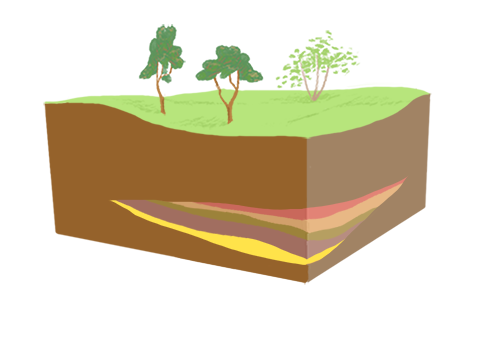
For mining exploration applications, the method and equipment to use depend on how the precious metal is concentrated or disseminated in rocks, on the size of the orebody but also on its depth. When precious metal is concentrated in a dyke, the detection may be performed by resistivity profiling using the Promis 10 Slingram type EM profiler or the T-VLF to image resistivity or the Syscal range equipment to measure electrical resistivity or induced polarization (Syscal R1 / Syscal R2 / Syscal Pro).
The following example shows how a sub-vertical dyke can be detected both with electrical resistivity and induced polarization. It has been acquired in Brazil using a Syscal Pro 48 with a 20m spacing dipole-dipole sequence. The electrical resistivity can only indicate the presence of a dyke. The associated anomaly can be conductive when filled with clayey material or highly resistive when containing quartz inclusions . The induced polarization (computed here as chargeability) is able to give an information on the content of sulfide (even disseminated) in the dyke, and therefore the possible presence of gold or other researched minerals.

For deep application and induced polarization measurement, we recommend the use of separate transmitter and receiver by using the TIPIX or VIP transmitter ranges associated to the Elrec of Fullwaver ranges of receiver. This method allows for sounding, profiling and imaging electrical resistivity and chargeability of the soil.





















